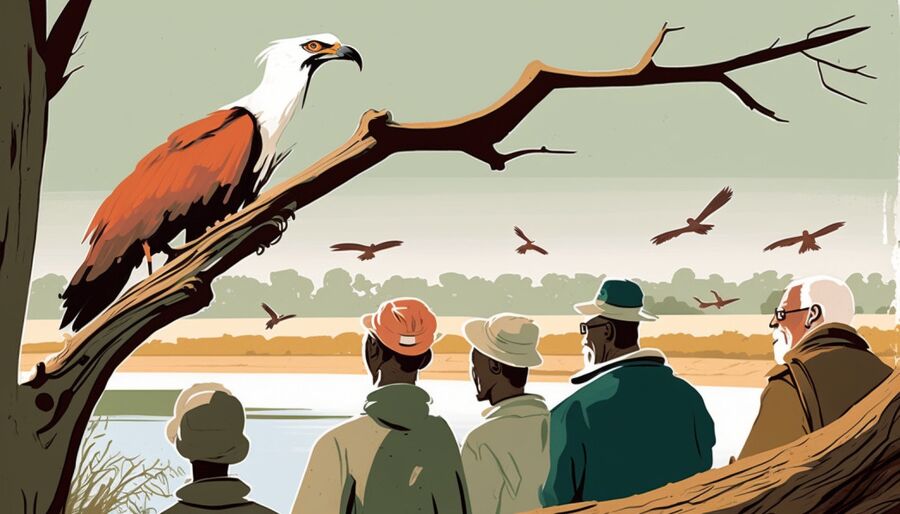
The African Fish Eagle: A Mighty Hunter of the Skies
The African Fish Eagle is a majestic bird of prey found across sub-Saharan Africa, known for its iconic call and impressive hunting abilities. Its striking appearance and distinctive behavior make it a favorite among birdwatchers and nature enthusiasts. From its regal plumage to its fierce territorial nature, the African Fish Eagle is a true symbol of Africa's wild beauty - all of which is why it is featured on our Top 10 South African Birds for International Birders.
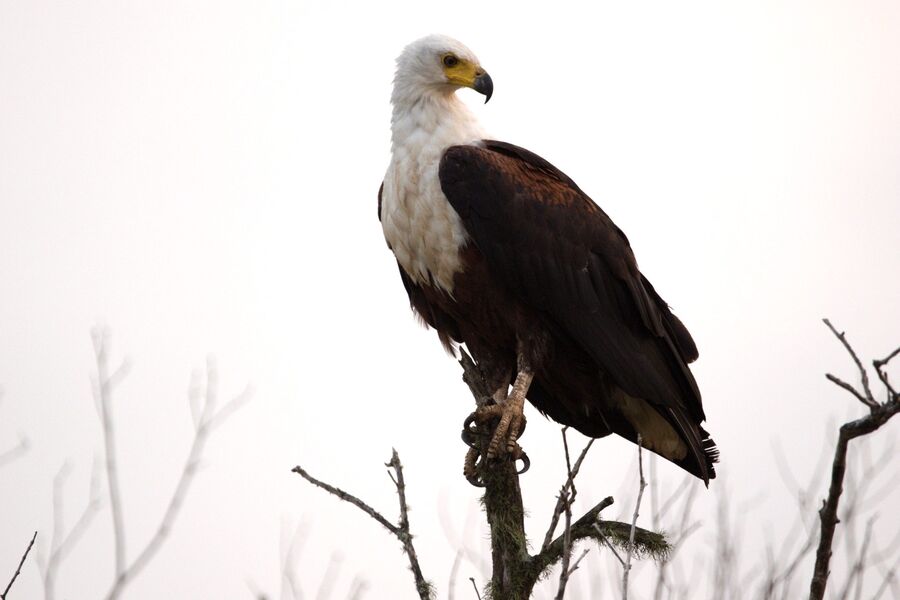
African Fish Eagle
Appearance and Identification
The African Fish Eagle is a large bird of prey, with a wingspan of up to 2 meters (6.5 feet) and a weight of up to 3.5 kilograms (7.7 pounds). It is easily recognized by its distinctive plumage. The head, neck, and tail are white, while the rest of the body is brown and black. The beak, legs, and feet are bright yellow, and the eyes are a striking shade of brown.
In terms of size, the female African Fish Eagle is slightly larger than the male, but the difference is not very noticeable. Both sexes look very similar in terms of plumage, although females tend to have slightly darker feathers.
The plumage of the African Fish Eagle differs between adults and juveniles. Juveniles have a predominantly brown body and a white head, whereas adult birds have a white head and a brown body. It takes about 4 years for the plumage to fully develop into that of an adult.
The African Fish Eagle is often mistaken for the Bald Eagle of North America, but there are several differences between the two species. The Bald Eagle only has a white head and tail, while the African Fish Eagle has a white head, neck, and tail. Additionally, the Bald Eagle has yellow eyes, while the African Fish Eagle's eyes are dark.
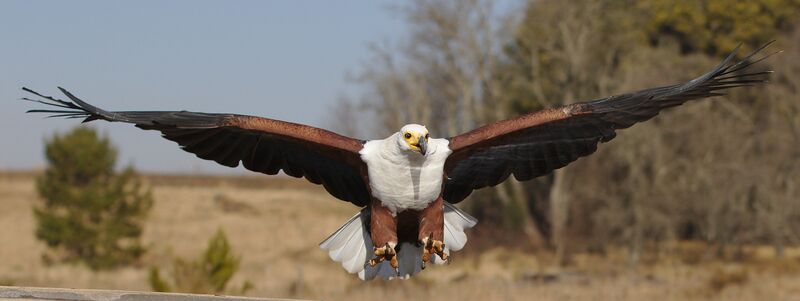
African Fish Eagle wingspan - Photo Credit: Derek Keats
Habitat and Distribution
The African Fish Eagle is a widespread species that can be found in almost every country in Africa south of the Sahara. It is particularly abundant near large bodies of water, such as lakes, rivers, and estuaries, where it can hunt for fish.
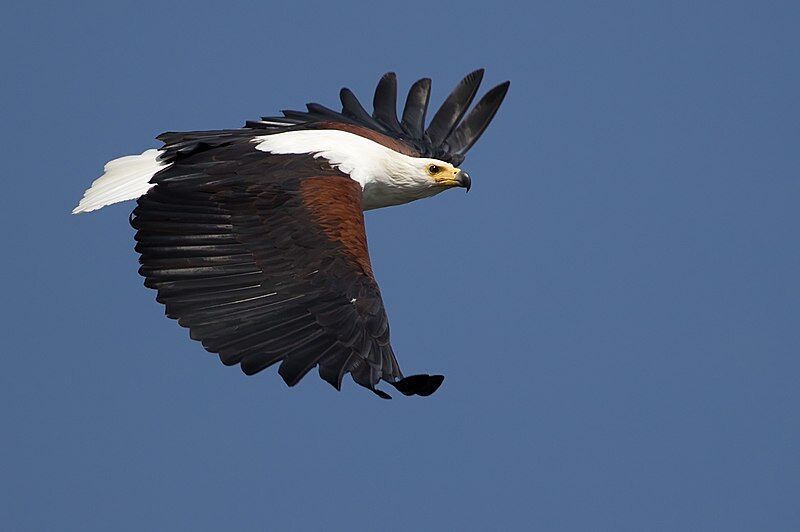
African Fish Eagle in flight - Photo Credit: Wikimedia Commons
Where to Find
The African Fish Eagle is widely distributed across sub-Saharan Africa, including in South Africa. In fact, it is one of the most common raptors found in South Africa. They can be found near rivers, lakes, dams, and other bodies of water throughout the country. Some of the best places to spot them in South Africa include the Kruger National Park, and the iSimangaliso Wetland Park.
In the Kruger National Park, visitors can enjoy game drives along the rivers and waterholes where these eagles are known to perch and hunt. The iSimangaliso Wetland Park is home to a variety of birdlife and visitors can take a boat ride to see the African Fish Eagles in action as they dive for fish.
When searching for the African Fish Eagle, keep an eye out for their distinctive white head and brown body, as well as their impressive wingspan. They are most active during the day and can often be seen perched in trees near the water or soaring above it in search of prey.
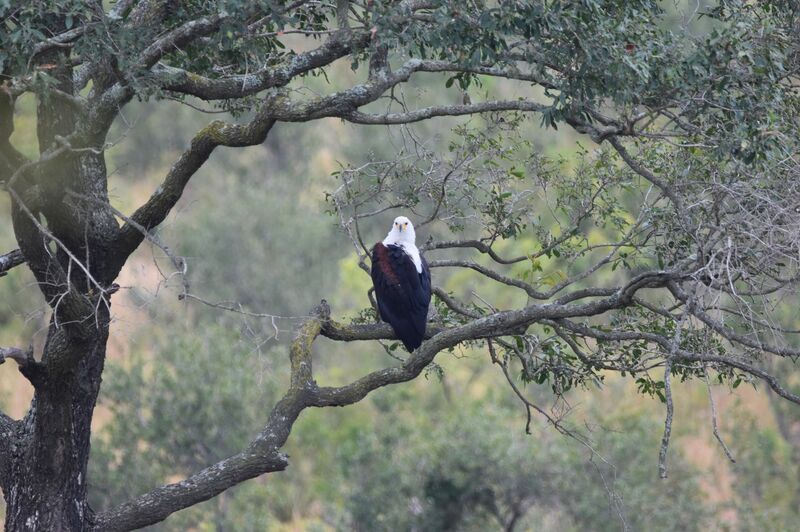
African Fish Eagle in tree
Behaviour
The African Fish Eagle is a powerful hunter that mainly feeds on fish, which it catches by diving down from the air and grabbing the fish with its talons. However, it is also known to prey on other birds, such as flamingos, and even small mammals, such as monkeys and hares.
One interesting behavior of the African Fish Eagle is its distinctive call, which is often heard near the water's edge. The call is a loud, haunting sound that has been described as a "yelping laugh" or a "whistling scream." In German, this eagle is known as the Schreiseadler - or Screaming Eagle. This call is not only a territorial display but also a way for mates to communicate with each other.
African Fish Eagle
The African Fish Eagle's call is often described as a quintessential sound of the African Wilderness
Play SongCultural Significance
The African fish eagle holds a significant place in the cultures of many African communities, and has been revered for centuries. The bird is featured on South Africa's 2 cent coin while in Zambia, the bird is a national emblem and is featured on the country's flag and coat of arms. In Zimbabwe, Namibia and South Sudan, it is the official national bird. The eagle is also celebrated in various folklores and traditional beliefs.In some African cultures, the fish eagle is believed to possess mystical powers and is revered as a symbol of power, strength, and purity. For instance, in the Shona culture of Zimbabwe, the bird is believed to have spiritual powers that can protect its owner and bring good fortune. It is also considered a sacred bird in the Bantu culture of southern Africa, where it is believed to be a messenger of the gods.
In recognition of its cultural importance, the African fish eagle has been featured in various artworks and literature. It has been immortalized in traditional sculptures, paintings, and carvings, and is a popular subject for African proverbs and folktales. Its iconic cry has also been used in many African movies, documentaries, and advertisements, making it a recognizable sound to many people around the world.

The Zambian flag features the African Fish Eagle
Conservation Status
The African Fish Eagle has adapted well to the effects of humanity and is currently classified as a species of least concern by the International Union for Conservation of Nature (IUCN). However, the species faces a number of threats, including habitat loss, pollution, and human disturbance. It is important to continue to monitor the population of African Fish Eagles and their habitats to ensure their survival.
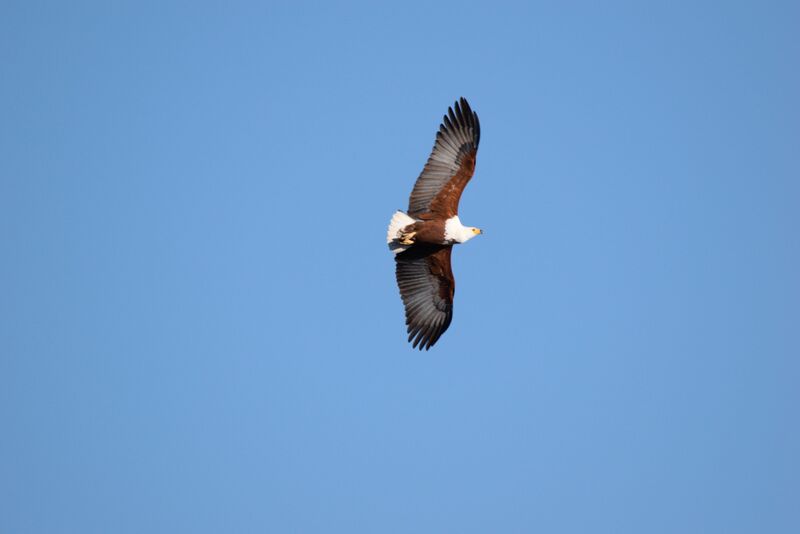
African Fish Eagle in flight
Conclusion: A Regal Hunter
the African Fish Eagle is a fascinating and iconic bird of prey that has captured the hearts and imaginations of people around the world. Its stunning appearance, distinctive behaviors, and cultural significance make it a truly remarkable species, and one that is worth experiencing firsthand. Whether you're an avid birder or simply appreciate the natural world, a sighting of an African Fish Eagle in the wild is sure to leave you in awe.
So if you are planning a trip to South Africa, keep an ear out for that iconic call and a watchful eye for that regal silhouette – you never know when you might witness one of nature's most impressive displays.
